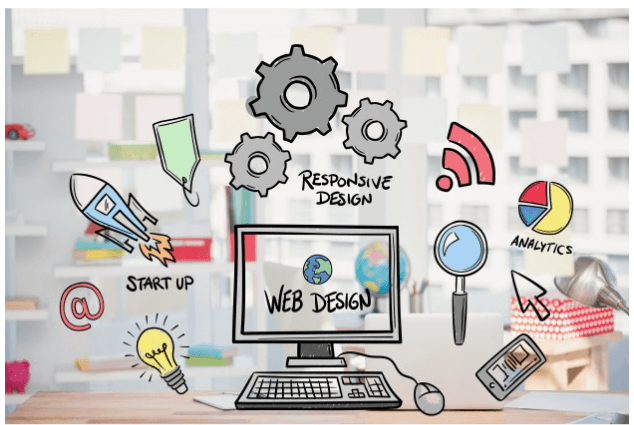
5 Simple Steps to the Website Design Process
When thinking about the process of designing a website, many web designers focus on technical aspects like code and wireframes. However, great website design isn’t only about slick visuals and content management. It’s about having a tried and tested process that will help you solve the many challenges you face along the way.
Whether you are a freelancer working or a major web design company, these 5 tips will help you come up with an effective process that works every time.
web design agency in Sydney – hoppingmad Interact focused on providing innovative, clever design and custom web development solutions for businesses.
1.Have a Great Website Proposal Template
Table of Contents
Being good at designing websites doesn’t guarantee that you will get work. Having a detailed and well-structured project proposal can be a decisive factor in landing new projects. A website design proposal is a written agreement between the designer and the prospective clients. It clarifies the client’s needs, the services you will provide, and the cost of the service.
Whether you decide to use a website proposal template or write your proposal from scratch, be sure it includes the following:
- A problem overview;
- The proposed solution;
- Outlining your process;
- Schedule;
- Price quote;
- About us and contact section.
The purpose of a website design proposal is to provide a detailed roadmap for the project that both the provider and the client can refer to. Having a well-thought-out proposal will make a great impression on potential clients and increase your chances of getting the job.
2.Identify Your Goals
The initial phase of the design process is about figuring out how you can help the client, i.e. identify the objective of the web design. Start by defining who your client is and then figure out what the site’s primary objective is: will it be used to sell, inform, or entertain? It can also be helpful to check competitor websites to see how the website you’re creating could be different from or inspired by them.
Answering these questions clearly will help start the project off in the right direction. Once you know the website’s goals, you’ll be able to define the project scope, i.e. what pages and features the website needs in order to fulfill the goal, as well as the timeline for building these elements out.
3.Create a Sitemap and Wireframe
The sitemap is the foundation of any well-designed site. It helps the web designer understand the site’s architecture and the relationship between the numerous pages and elements.
Once you have the sitemap in place, the next step is to build a wireframe mockup. Even though the wireframe won’t contain any final design elements, it will serve as a preview of how the website will eventually look and help with the formatting of the website elements.
4.Create the Content
Website content serves to engage readers and guide them to take the actions that are necessary in order to fulfill the website’s goals. This is a crucial step when understanding how to create a website from scratch. This will be affected by how the content is written but also how it is presented (the structural elements and typography).
Content is also beneficial for SEO as it can help boost a website’s visibility for Google and other search engines. Getting the keywords right is crucial. You can use online tools like Google Keyword Planner and Google Trends to see what actual users are searching on the internet. The Keywords you wish to rank for should be placed in the meta description, title tag, H1 tag, and throughout the site’s content.
Typically, the client should provide the content, but it is very important that you inform them what keywords should be included in it.

5.Visual Elements
People like to see visual content because it makes a page feel easy to digest. It can also enhance the messages in the written text or even convey a message without users even having to read it. Good-quality images will give the site a professional look but you need to ensure that they’re mobile-friendly as well.
This stage of the web design process is often shaped by the client’s branding elements, logos, and color choices. If possible, try to stay away from free stock images and use a professional photographer to get the photos right.
Final Thoughts
Once all these elements are done, the next step is to thoroughly test your website design. If you are happy with the result, it’s time to launch. However, don’t expect this to go perfectly. Web design is a continuous process that requires constant upkeep.
We hope that these 5 tips will help you get your web design projects off the ground faster and easier.











